Before I start, please note that I don’t normally post pieces of this type over the weekend, but this is going to be a long one and is therefore best posted on a non-workday. Get yourselves a fresh cup of joe or your Morning Margerita and some snack food before going any further.
Here goes.
The need for emergency supplies, or rather, the media’s interest therein, seems to be a cyclical thing. The Red Cross has just published a list which is okay, I guess, but it’s woefully incomplete. I’ll address its shortcomings further down.
I’m not one of the “seasoned” preppers by any means. But I have made, and continue to make, various kinds of contingency plans for myself and, if possible, for my family. So here’s my take on the whole thing.
Before you start any kind of emergency / disaster preparation, understand that you’ll need to make two kinds of preparation in answer to the eternal questions concerning looming disaster: do I hunker down, or do I bug out? Each requires not only a different set of preparations, but also a different mindset. Frankly, unless your town is being evacuated, you’re better off staying in place. And if you are getting the hell out, do not go to a marshalling point with your carefully-packed supplies, because the first thing the law enforcement stooges will do is take all your stuff and stick it in the communal pot — which means you’ll be supporting the grasshoppers.
Just remember that if you’re going to join up at someone else’s house — highly recommended because it makes the place easier to defend — just make sure that you arrive properly armed and provisioned, or else your buddy running the sanctuary is going to turn you away (or he should, anyway). Do not be the guy who has to rely on the good graces of others: four or five self-sufficient extra people can defend a house and its contents with ease, but four or five hungry mouths just means that everyone’s going to go hungry sooner. And don’t get angry or butt-hurt when your buddy turns you away if all you’re bringing is your empty hands: you’re the one who’s unprepared, not he. This is all the more critical if you’re bringing small kids to the party: look after them yourself, because otherwise they’re just a burden on everyone else.
I can’t believe I even have to say all this, but I suspect that most people have made no plans either because they’re stupid and negligent, or they think “it can’t happen here”, or else they expect “the government” to look after them. We are not Europeans, people: we’re Americans and we take care of ourselves.
Hunkering down. This means that you’re not going to leave the house because the situation out there is too volatile. Complete social breakdown means that you’d likely be vulnerable outside your house unless you’re part of a group which can handle any kind of mutual self-defense requirement. So you decide to stay at home and create a fortified position. This is generally the case too when there’s a local issue such as a prolonged power outage, or nearby locations have been flooded, leaving you isolated. (Obviously, if we’re talking potential damage such as wrought by a tropical storm in Florida, the East Coast or the Gulf Coast, then it’s time to bug out.)
I would even say that in 90% of occasions other than the above, you’d be better off staying put. The reason is simple: you can keep more survival items in a house than in a car. Also, you can keep larger / heavier items simply because you don’t have to lug them around.
It sounds all daring and romantic to hit the trail and be independent and stuff, but anyone who’s ever been on a full-pack route march will quickly disabuse you of your illusions. And a car / SUV / EOTWAWKI vehicle is all very well, right up until you run out of gas because you were stuck in a fifty-mile line of barely-moving cars on the interstate.
So let’s look at what you need in a hunker-down situation.
Backup power. This could mean as little as spare batteries for all your survival appliances like phones and flashlights, through a power inverter than can be run by your car and keep your fridge running, all the way up to a large backup power unit which will keep your large items usable (e.g. fridge, deep freeze, ovens, microwaves and of course, laptops).
Food should not be a problem if you have a decent quantity of shelf-stable groceries in your pantry — and if you don’t have these, then you should get some. This would include canned goods, dry goods (sugar, flour, salt etc.) as well as protein bars and such. (By the way, forget making bread au naturel; it seldom works and usually tastes like crap. Stick to rice and porridges like oatmeal or grits (see below).
Water is of course a necessity, and you need lots, at least a gallon a day just for drinking alone — although if you have a swimming pool or even a large hot tub, you’ll be okay for water for some time. (Yeah, chlorinated water tastes like crap but you won’t die of thirst.) And if you get one of those water purifying thingies, you’ll have fourteen to twenty thousand gallons of potable water on hand. With a couple of cheap plastic paint buckets, you’ll even be able to flush your toilet with the pool water.
You’ll need to cook stuff. You can do it the hard way or the easy way. The hard way means cutting wood and making fires — not easy in the suburbs when firewood is at a premium, and impossible in any large city. The easy way is a Weber grill with two propane cylinders. I keep one full and use the other until it runs out; then I hook up the full one and get a refill immediately. (Some people rotate three cylinders in this manner, and I’ll never argue with them about it.) If you’re careful and husband your gas, you’d have about six to eights weeks’ cooking with that supply. I also have on hand a couple of single-burner Coleman-type camp stoves (with a zillion butane gas cylinders), which worked fine the last time we had a serious power outage. They are remarkably frugal — you can heat up a can of coffee and food twice per day (i.e. warming up a can in a pot of water), and doing just that, one of those gas cylinders will last you 4-5 days. (Pro tip: most Asian markets sell cheap copies of the Coleman stove that last forever — mine are at least a decade old and are still running strong — and the cylinders cost about a buck each, much cheaper than the branded butane sold by camping stores.)
Lighting. If the mains power is out, you have to have light because apart from any actual need (e.g. for reading), light stops you from getting depressed at night. I have a couple of DD battery-powered mini-florescent lanterns, which likewise worked just fine.
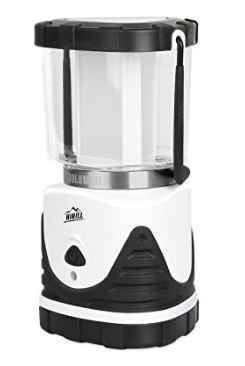
And of course, you’re gonna need a few flashlights, such as the SureFire (for personal defense) and the venerable Maglite 3D. What I like about these two old warhorses is that modern xenon bulb technology has changed them both beyond words and given them new life.


First aid / medications: get as comprehensive a kit as you can afford, and supplement according to your own assessment and needs. Most important are your medications, if you’re taking any. It’s no good having lots of Tylenol when what you need is Diovan for your blood pressure. I know that insurance companies only pay for about a month’s worth of medications at a time — we all know why — but if your life depends on your meds, get your doctor to write you a prescription for three months’ supply, then bite the bullet and pay cash for them. All the prep in the world isn’t going to be worth much when you keel over from a preventable heart attack. Once you have the extra meds, start using them and top up the stash with your “fresh” monthly Rx so the drugs stay effective. I have at least 90 days’ worth each of Diovan (for high BP) and Allopurinol (gout), as well as stuff like low-dose aspirin 87mg (heart) and the (exceedingly few) supplementary vitamins I take. Also, if you’re of that age, don’t forget your contraceptives. Danger causes the libido to rocket, folks, and it’s also a good way to keep warm.
Weaponry: you’ll need to protect all this stuff from people who aren’t as prepared as you, so I don’t think I need to talk too much about this one. Suffice it to say that you should have at minimum one each of the following, and make sure every adult in the house can use all of them:
Pump-action shotgun — I prefer 20ga, but 12ga seems to be the most popular. Just remember that a shotgun is fine, but they don’t hold much ammo and reloading is a bitch.
Assault rifle — I prefer the AK-47 (7.62x39mm) , and the PTR-91 (7.62 NATO) is equally fine; but the AR-15 (5.56mm Poodleshooter) is mighty popular too, so go with what you’re comfortable using. If you live in one of the gun-fearing wussy (GFW) states and can’t buy a modern semi-auto rifle, get a Marlin lever-action carbine in .30-30 — or, if your handgun of choice is a .44 or .357 Magnum, then make the Marlin a “companion piece” and get it in the same caliber.
Handgun — any semi-auto; mine is of course the Colt 1911-style, but if you can shoot the eyes out of a gnat with a Glock 9mm, then go ahead [sigh]. Generally speaking, a semi-auto is more effective if you’re going to be involved in a prolonged shooting, but honestly, I won’t argue with anyone who prefers to use their S&W 686 (as long as you stock up with speedloaders and practice using them). Actually, choice of ammo is more important than the gun: make sure you’re loaded with hollowpoints, whatever the caliber or handgun type.
Rimfire rifle / handgun — for all those times when you don’t need a large caliber.
And it goes without saying that you should have plentiful ammo — at least 200 rounds each per gun, not just per type. (Rimfire ammo should be in much, much greater quantities — in the thousands or even tens of thousands — because if nothing else, it’s good barter material, as is liquor.)
Now let me address the contents of the Red Cross’s list, because that seems to be an attempt to get people ready to bug out. You will need to carry sufficient supplies for three days, and preferably five. And if you have small kids, forget about hiking: you’ll need a car.
- Rucksack: sure. Just make sure that it’s not so heavy that you can’t carry it further than a couple miles without passing out.
- Water: get a Camelbak. Water is heavy, and 5-gallon jugs are as awkward as hell to carry. Remember, though, that if you’re already carrying a backpack, the Camelbak isn’t going to lighten your load any. And if you get the smaller Camelbak, you may as well just carry three canteens.
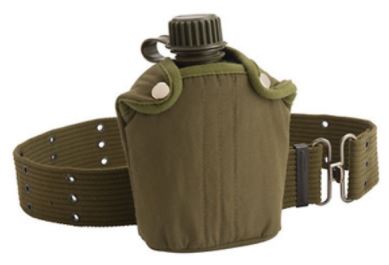
- Food: jerky, energy bars / trail mix, nuts and dried fruit or candy. Everything else is too heavy. Forget cans of anything unless you eat them all in the first couple days, and forget any kind of balanced diet — remember that you’re out for five days, tops — and all you really need is protein and minerals to survive that small period of time. But if you still want something more, go here and knock yourself out.
- Flashlight: small and powerful (e.g. Surefire 6P and/or Maglite AA), with spare batteries.
- Radio: the hand-cranked ones are fine, but beware of the cheap ones because they require so much cranking, you’ll be exhausted by the time you get enough juice for a 2-minute broadcast. Easier to take batteries for them. My advice: spend a little more and get a phone charger and solar panel included.
- First aid kit: as large as you can fit into your backpack, including medications.
- Multi-purpose tool: I have two: a Gerber Multiplier 600 and a Swiss Army Champ (it’s a sentimental choice, sue me). Why two? Because they’re small and easily lost.
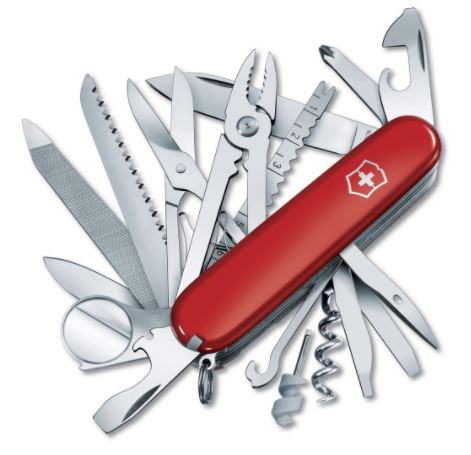
- Sanitation and personal hygiene items: they mean asswipes, handwipes and tampons. Baby wipes are the best, and tampons can also be used to plug up a wound.
- Mobile phone with chargers: get a spare battery, charge it and swap it out occasionally with the “first” one to keep it in condition. Also get a small portable charger for an emergency boost.
- Copies of personal documents: (medication list and pertinent medical information, proof of address, deed/lease to home, passports, birth certificates, insurance policies). Just guard them with your life.
- Emergency blanket: a.k.a. the Mylar sleeping bag. I like the Titan, but the SOL Bivvy is also good, just less rugged. If you live in a cold climate, don’t forget stuff like gloves, a scarf, a coat, a hat, thermal undies and decent insulated boots.

- Extra cash: $500. If you need any more, you’ll have to start shooting (see below).
What the Red Cross missed:
- Gun: Two would be better, three optimal. Carry a rifle or shotgun openly, conceal your handgun(s). I’d recommend a tiny revolver like the NAA Mini-Revolver or a Bond Arms Derringer as the third, “last resort” piece.

- Knife: not just the little thing you get on a multitool; you need at least one large knife (e.g. a Ka-Bar) and a smaller pocket knife.

- Axe / hatchet: actually, I prefer a roofing hammer, as long as you sharpen the blade first.
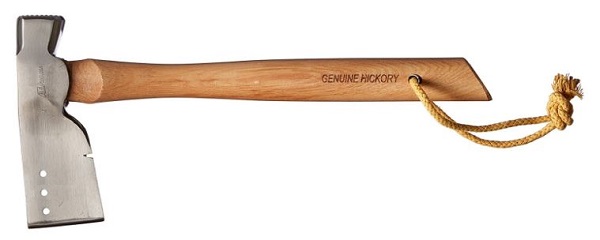
- Fire starter: I like the SurvivalSPARK, because it has a spiffy little compass attached.
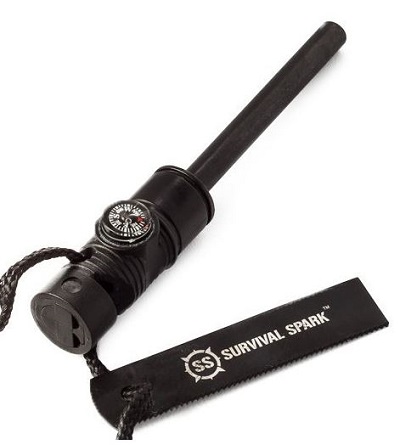
I’ve written way too much, and I’ve only scratched the surface. I only hope I’ve got people to think about this a little, if they haven’t already. Just remember: like most stuff of this nature, you never need it until you need it — but then you’ll need it really badly.
For a more comprehensive treatment of the topic, go to Bill Quick’s SHTF place. In the meantime, let’s not get carried away, shall we?
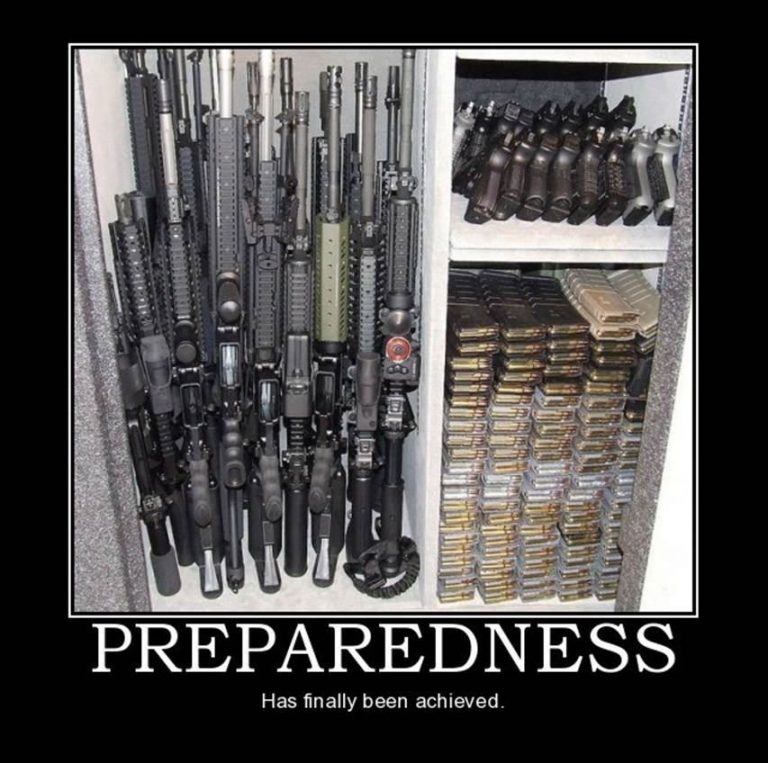
Little light on foodstuffs would be my only criticism, but otherwise, not a bad start.

I’ve lived on the Gulf Coast my entire life, and currently live about 10 minutes away from Galveston Bay. I’ve been through several direct hurricanes in recent memory, so here are a few thoughts to your otherwise fine list.
1 – generators take lots of gas! Gas will be in short supply, and those 5 gallon jugs you filled last season are going to be crap. Gas goes bad (the ethanol blends are the worst) and trying to run a small engine on crap gas is a lesson in frustration. Be aware. I generally rotate my gas supply by periodically emptying the 5 gal jug into the car every few months and then refilling. Also, generators don’t like to sit for long periods of time. A lot of people bought generators during Ike and then stuck them in a shed. Nine years later they pulled them out for Harvey only to find that they wouldn’t start, wouldn’t run, and were generally worthless.
2. Most Americans have no idea how to mentally and emotionally deal with living without electricity. My wife literally sat and stared at the wall. She fretted and worried and drove herself stir-crazy. IDK how to best handle that. Books, board games, etc. can only get you so far. We are so electronically connected to the world that going cold turkey is an emotionally draining experience. I pretended we were camping at a really lousy park and dealt with it, but you’ll need to talk to your spouse about how to best handle that issue.
3. Every event, people start worried about price gouging. Don’t. Get some of the 5 gallon insulated water jugs ($20 at wally world) and fill them up from the faucet. Don’t go to stores and fight over the bottled stuff. I have several water jugs and avoid all that hassle. Beer, on the other hand, buy in bulk .
4. Toilets won’t flush if there’s standing water in the street. Trying to flush will only overflow the toilet into the house. Designate a spot in the backyard for #1, and designate the back bathroom for #2 with no flushing. Turn off the water supply to that toilet since flushing is a muscle memory response and people will flush anyway, no matter how many times you tell them not to. Yes it stinks and is plenty disgusting, but so is mopping up #2 from you floor.
5. If you lose power, the freezer will stay cold for at least a day if you don’t keep opening the door. Otherwise, grill/BBQ everything! It’ll only spoil, so might as well cook it and have a feast. Save the dry rice and beans for later. Also have a good ice chest (one of the few reasons to buy a Yeti) and some blue ice packs. Once cooked (and cooled), stash the left-overs in the yeti with ice packs and they’ll last for several more days.
6. Know your flood plains and your house. This should actually be #1. Don’t plan on hunkering down if there’s been flooding before. Everything should be focused on bug-out at that point.
7. Buy beer in bulk. I may have covered that before, but seriously. I bought out all the Shiner at two local convenience stores during Harvey, and still ran dry. Heed my words!
Psh. No one really needs anything other than the essentials:
1) Steaks.
2) Booze.
3) Naked girls.
4) Fireworks.
5) Extensive collection of firearms.
If you know the purpose of the Red Cross list, you’ll ignore it. Why?
The purpose of that list is to prepare you to live in a Red Cross shelter.
Me? I have no intentions of ever stepping foot in one of those hellholes. I’ll live rough in the woods first. My plan is to bug in unless I’m forced to bug out, and my preps reflect that.
Food: if you go to your local Mormon Bishop’s Kitchen they will help you with advice, hardware and loan of their canning and sealing equipment. At least I hope they will in your area. 1 gallon cans of flour, rice or pasta properly sealed will last an awful long time.
Cash: Keep a few gold or silver coins or bars of bullion.
Specialty tool: A still, or even just a coil of copper and a few fittings, will get you liquor to trade or keep up your afternoon cocktail habit.
Last year I had a good read with outdoor/gun writer Bryce Towsley “Prepper Guns”. A gun newbie will get a good education.
Also regards ammo…Trainer guru Clint Smith made the observation the other week, its great to have lots of ammo and lots of magazines. But nobody will be better off by having UNLOADED MAGS. You dont want to be the guy in the gunfight calling timeout as you load your mag. Put the damn ammo in lots of mags NOW.
And before you buy anything, one should make a study of what disasters one may face, especially for your direct neighborhood. What’s your finish floor elevation in relation to the nearest body of water? Do your streets flood during heavy rains? Is your area historically flood prone? Are you in or near a national forest that may burn?
Plan accordingly.
If you are planning sheltering in place, is your house in good repair? Better to eat cold ramen in a dry house than to eat Mountain Home pre-packaged in a house with no roof.
Pick a month well ahead of the usual window of danger to check your list and stock up on perishables. Test run your genset, grill, or any other equipment. Replace the batteries in everything. Fill up the jerry cans.
During the window of danger, be sure to never let your fuel tank get below 3/4 full.
If you go through a disaster, once the thing is over, sit down with your family and have a debrief session:
-What did we do right
-What did we do wrong
-What do we wish we knew before this happened?
And write it all down. Refer to this list when prepping for next year.
And when the window of danger is effectively over, rotate the stock of emergency supplies into your normal life (eat the cans of food, put the gas from the jerry cans into your car), or donate what you don’t use. A lot of that stuff will expire, so be sure to keep an eye on the expry dates.
We built a place on 17 acres North of Houston near the Sam Houston National Forest about 3 years ago. Since we are rural and lived through Ike some years ago with a gas generator and drop cords to keep everything cold, I insisted that we get an on-demand generator for the new house big enough to run everything (the house has a 500 gal propane tank and the generator has its own 500 gal propane tank). We have a fairly large house with all the power saving ideas (6″ stud walls, vapor barrier backed stryreform with TyeBack barrier elsewhere and foam insulation everywhere so we need only one air conditioner unit for a 4200 square foot house – everything brick and stone facing north/south with porch along the south side). So, with our well, generator, and a somewhat limited arsenal compared to yours, Kim, we are fairly set up to weather most storms (we got 2.5 feet during Harvey and were fine since we are on a hill and have the drainage worked out) – I still need to buy beer / wine in bulk.
Look into stripper clips and some of the devices that make them easier to use. I keep about 2K rounds of 5.56 on clips and can load a 30 rnd mag in a few seconds without worrying about spring life. I do keep a half dozen mags loaded but, if I end up in a situation where I need 200+ rounds and don’t have a few minutes to stuff more mags, I probably wasn’t paying attention and deserve what I get.
Couple of comments. Do you know how long your fluorescent lanterns will run on a set of batteries compared to an inexpensive LED type? We still have a propane mantle lantern, a couple of Dietz oil lamps, and an Aladdin mantle lamp available but generally have used Rayovac 3-D LED lanterns around the house during extended power fails; I only replaced the batteries after 4 years as a precaution against corrosion/battery leaks; they were still running strong after many hours of use.
Same with your Mag light. LED elements are available; they won’t give the Mag a beam like a modern LED light without spending a chunk but light output will be higher, and the lifespan increase of both batteries and “bulb” is substantial. And you get to keep your lovely Mag cat-whacker.
We can’t put in a stationary generator (HOA…) or I’d get one that runs on utility gas; I’ve got a cheap gas unit that kept fridge and freezer going last outage but it refused to run after a 90 day vacation until we rebuilt the carb. We’re saving for a propane inverter unit; they have a much better rep for surviving longer out of service intervals. Plus it will have the capacity to run the furnace blowers periodically, or the portable A/C to keep one room cool, and be clean power for the computers. Gas can be used in an emergency (but then we get into the mostly maintenance cycle or a rebuild level cleanup…)
Given warning of an impending crisis we have a couple of WaterBOBs that fit in the upstairs bathtubs and can hold 60-90 gallons of water. We always keep 2-3 cases of bottled on hand and some bleached and filled LCI 20 liter water carriers.
The list is worth looking at for ideas. I know we’re not really ready for a lot of things but we’re so much more prepared than almost anyone else I know, its scary…
Lots of good comments and points above. My wife and and are old folks in our 70’s and we live on the North side of a town in the Texas Hill Country where I can see horses and cattle from my back yard, we will hunker down and stay warm and dry in the event of a disaster. We are too far North for hurricanes and too far South for tornados and when we had and eight inch rain in an hour and a half a few years ago, we did not take on water and it was gone in a few more hours. Since our trees are few and far between and our soil is pretty sorry for growing grass I am not worried about fire.
I chose this area for our retirement home and we purchased a small two bedroom, two bath house, built for a Mormon couple 25 years ago with lots of insulation, excellent ventilation with a well built fireplace. We are well away from most everything but have some great working class neighbors who drive large trucks and like guns and we like each other, it’s a good thing to have good reiable people close by.
We keep enough food on hand for six to eight weeks and we have water available, we have propane for cooking if the electricity is gone and I have a lot of firewood and a fire pit set up for cooking. We also have lots of friends and family in the area, like minded, ex-military, who would be reliable people to stand with us sharing the experience whatever it might be.
Having said all of that I think the most important aspect of getting through a survivor event is keeping a decent mental attitude that you will come out on the other side, no matter what you are going through. I went through an escape and evasion course in the Army over 50 years ago and keeping a positive attitude was drilled into us as the most important thing. We were told that trying to get food would expend too much energy and we could live for several weeks without eating, however hydration daily is a necessity and most of all we need a clear head to make reasonable, sound decisions. When in doubt we were told to slow down, sit down and don’t make our situation worse.
Say a few prayers, we are Christians, and enjoy what you do have to make your way day to day. At our age the journey might not be too long.
As for guns & ammo, knives and gear we probably have too much but we know your really can’t have too much.
Nothing to add here. Except a general note…
My mother had a stroke Tuesday night, and I am spending a lot of time in the hospital. They have wi-fi, and I spend a lot of time surfing the Web on a tablet. Their Web access is filtered, and this site is blocked because GUNS.
But Massad Ayoob’s blog is not, nor is the NRA’s Shooting Illustrated. Go figure.
Old Texan has the gem within the comments above.
” When in doubt we were told to slow down, sit down and don’t make our situation worse. ”
Words to remember and employ when the shit hits the fan.
One factor that needs consideration is what item/s do you think will constitute most desirable barter currency in a given disaster situation.
Short term, cash should be fine, medium term, small gold coins ( 1 gram – about $45) silver ingots (1 ounce – about $25), longer term, start thinking ammo in popular calibres, , liquor, pharmacy medicines and personal hygiene items, soap, disinfectant, tampons, etc.
Keep a stash of all these items and you should see out most events just fine.
Come the zombie apocalypse, however, and you are on your own. Civilisation ends, banditry begins.
Regarding storing gasoline for vehicles and generators:
His latest posts on the subject:
http://www.commanderzero.com/?p=4479
http://www.commanderzero.com/?p=4460
Stay away from gasohol if at all possible, especially if intended for small engines. It’s really hard on fuel system parts. Check carefully, you may find a brand that doesn’t use it. Chevron, here in CA, doesn’t use alcohol in their fuel. Good stuff.